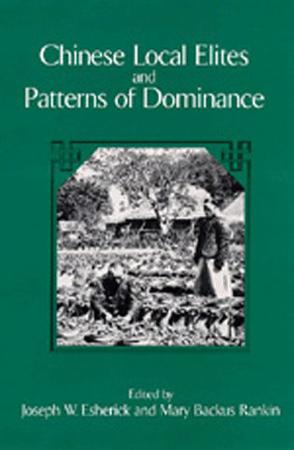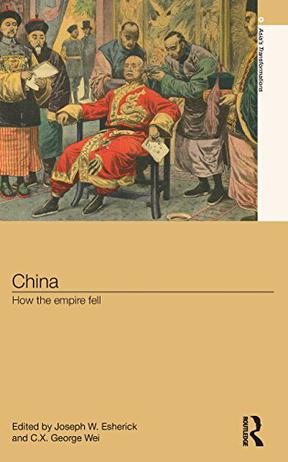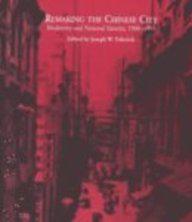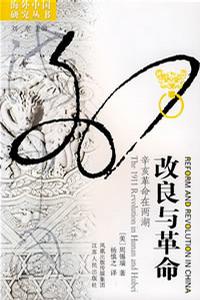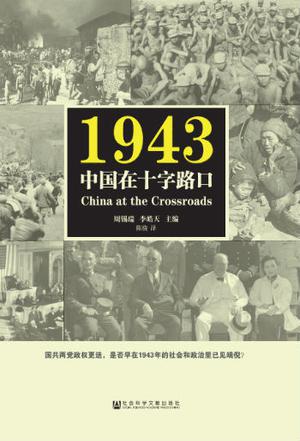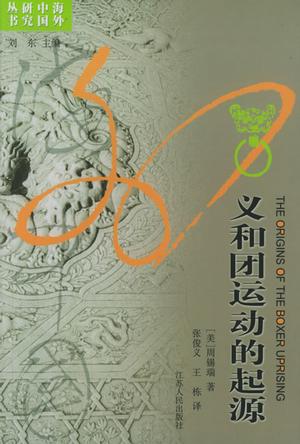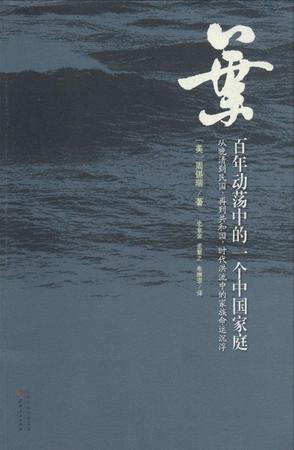欢迎来到相识电子书!
标签:周锡瑞
-
China
The Qing dynasty was China’s last, and it created an empire of unprecedented size and prosperity. However in 1911 the empire collapsed within a few short months, and China embarked on a revolutionary course that lasted through most of the twentieth century. The 1911 Revolution ended two millennia of imperial rule and established the Republic of China, but dissatisfaction with the early republic fuelled further revolutionary movements, each intended to be more thoroughgoing than the last, from the National Revolution of the 1920s, to the Communist Revolution, and finally the Cultural Revolution. On the centenary of the 1911 Revolution, Chinese scholars debated the causes and significance of the empire’s collapse, and this book presents twelve of the most important contributions. Rather than focusing on Sun Yat-sen’s relatively weak and divided revolutionary movement, as much previous scholarship has, these studies examine the internal dynamics of political and socio-economic change in China. The chapters reveal how reforms in education, army organization, and constitutional rule created new social forces and political movements that undermined dynastic legitimacy within China and on its frontiers. Through detailed analyses, using new archival, memoir, diary, and newspaper sources, the authors cast new light on the sudden collapse of an empire that many thought was at last embarked on a road to reform and national rejuvenation. China: How the Empire Fell will be of huge interest to students and scholars of modern Chinese history as well as those of contemporary China. -
Remaking the Chinese City
In China today skyscrapers tower over ancient temples, freeways deliver lines of cars and tour buses to imperial palaces, cinema houses compete with old theaters featuring Peking Opera. The disparity evidenced in the contemporary Chinese cityscape can be traced to the early decades of the twentieth century, when government elites sought to transform cities into a new world that would be at once modern and distinctly Chinese. Remaking the Chinese City aims to capture the full diversity of recent Chinese urbanism by examining the modernist transformations of China's cities in the first half of the twentieth century. Collecting in one place some of the most interesting and exciting new work on Chinese urban history, this volume presents thirteen essays discussing ten Chinese cities: the commercial and industrial center of Shanghai; the old capital, Beijing; the southern coastal city of Canton; the interior's Chengdu; the tourist city of Hangzhou; the utopian "New Capital" built in Manchuria during the Japanese occupation; the treaty port of Tianjin; the Nationalists' capital in Nanjing; and temporary wartime capitals of Wuhan and Chongqing. Unlike past treatments of early twentieth-century China, which characterize the period as one of failure and decay, the contributors to this volume describe an exciting world in constant and fundamental change. During this time, the Chinese city was remade to accommodate parks and police, paved roads and public spaces. Rickshaws, trolleys, and buses allowed the growth of new downtowns. Department stores, theaters, newspapers, and modern advertising nourished a new urban identity. Sanitary regulations and traffic laws were enforced, and modern media and transport permitted unprecedented freedoms. Yet despite their fondness for things Western and modern, early urban planners envisioned cities that would lead the Chinese nation and preserve Chinese tradition. The very desire for modernity led to the construction of a visible and accessible national past and the imagining of a distinctive national future. In their investigation of the national capitals of the period, the essays show how cities were reshaped to represent and serve the nation. To promote tourism, traditions were invented and recycled for the pleasure and edification of new middle-class and foreign consumers of culture. Abundantly illustrated with maps and photographs, Remaking the Chinese City presents the best and most current scholarship on modern Chinese cities. Its thoroughness and detailed scholarship will appeal to the specialist, while its clarity and scope will engage the general reader. -
改良与革命
作者系20世纪60年代后成长起来的美国历史学者的新的一代,在撰写本书之前,作者用了两年时间,阅读了大量的中外资料,在英国和日本查阅了辛亥革命前后的外交档案,并摈弃了以往美国某些权威性中国近代史著作中的传统价值观念,对两湖地区辛亥革命时期的社会经济、政治、文化状况,进行了比较客观和深入的探讨, 从经济利益得失的角度 ,分析了社会各个集团政治情绪的变化,以及它们相互之间的关系。作者在此方面的研究取得了值得重视的研究成果,并广为学界熟知。本书的一些学术观点自然未必尽能为国内学者所同意,但至少可以起参考和启发的作用。 责任编辑审读了原稿,按编辑规范做了必要的加工。将书中的一些港台语言改为大陆通用的语言,并仔细核对了注释,重新编排译注的序号。 -
1943
当今美国中国近代史研究领域中最有成就的学者之一、美国中国学研究的两个最高奖——费正清奖和列文森奖获得者 “国家记忆•致敬历史记录者”年度历史图书、《中华读书报》年度十大好书、《北京晨报》度致敬图书、“中国书业年度评选”十大好书作者 周锡瑞先生作品 《1943:中国在十字路口》 国共两党的政权更迭,是否早在1943年的政治和社会里已见端倪? 编辑推荐: 1943年的中国与世界,是个什么样子? 为什么蒋介石把新疆回归中央称为民国建立以来的“最大成就”? 康生被称为“延安的铁菩萨”,他在整风运动中是如何抓特务的? 1942-1943年的河南大饥荒,救国或饿死人民? 1943年的重庆,通货膨胀、限制物价与政权合法性是如何影响人民生活的? 王明道在沦陷区的独立教会是如何走光明之路的? 通过分析1943年一系列的事件、趋势和矛盾,我们能否更好地理解中国政治和社会的深层次变化? 内容提要: 1943 年,不平等条约被废除;蒋介石写作并发表了《中国之命运》并且与罗斯福和丘吉尔在开罗会议上会晤;蒋夫人宋美龄在美国国会发表了历史性的演说;新疆脱离了苏联长达十年的控制回归中央;河南遭遇了灾难性的饥荒;中共正在经历延安整风中最后也是极左的“抢救运动”。 一旦把关注点集中在特定的一年,就能发现这一年发生的很多事件,都对后来的历史发展起了重要作用…… 通过研究上述和其他事件,从不同的角度来观察这一年,作者试图在本书中对一些特定时刻进行史实重建,在作者看来,这是超越以中美关系为核心的狭隘的抗战研究的最好办法,由此得以理解那些决定中国命运的广泛的社会、政治、经济、军事和外交发展事务。 -
义和团运动的起源
长期以来,有关义和团运动起源的问题一直扑朔迷离,众说纷纭。美国学者周锡瑞在本书中以详尽的史料、独特的视角和崭新的方法将这一问题的研究推到了新的高度。作者对19世纪山东的社会、经济结构作了区域性分析,对中西文化的冲突进行了深入的历史溯源,尤其是用文化人类学的方法对鲁西北地区的民间文化,如社戏、话本、宗教、尚武、民谣等都作了细致的研究。在此基础上,作者进行了宏观历史概括,认为鲁西北的社会结构、中西文化冲突和独特的社会文化心理间的“互动”,最终导致义和团运动的爆发。 -
叶
(当今美国中国近代史研究领域中最有成就的学者之一、美国中国学研究的两个最高奖——费正清奖和列文森奖获得者周锡瑞代表作) (著名汉学家史景迁 柯文 罗威廉 裴宜理联合推荐) (著名历史学家、教育家章开沅倾情作序并推荐) (从晚清到民国、再到共和国,时代洪流中的家族命运沉浮) 《叶》主要讲述了中国百年历史中一个家庭的变迁,从晚清到“文革”结束,把整个国家史诗般的记述活灵活现地展示了出来。叶家人的生活显示了决定现代中国的重大事件的人性化的一面:19世纪大规模的破坏性叛乱,共和国时期的经济发展和社会转型,二战时期日本的侵略,以及文化大革命中的浩劫。 安庆叶家的缘起,最早可以追溯到元朝末年的钱塘教谕叶盛二,这就决定其后代多数走的是“学而优而仕”的传统道路。第四世叶华高中进士,此乃安庆叶氏成为显赫世家的起点。早期的文字记载很少,作者主要是借助于后世的追忆与传说,着重介绍了谱牒的纂辑与祠堂的修建,从总体上描述了古老宗法社会的根基。 安庆叶家比较完整的历史,似乎是从1802 年县衙以西叶家老宅一个婴儿的诞生开始,他的名字是坤厚。他和他的儿子伯英在道、咸年间的国内战乱中,如同曾国藩、李鸿章一样组织地方团练,为扶持风雨飘摇的大清王朝立下汗马功劳。虽然未能擢升为封疆大吏,但毕竟已从道台攀登到省一级政府中的藩臬要职。父子二人都在大清河的水利工程中有所建树,并且顺应同光新政的潮流在政府部门工作中有所革新。他们不仅为安徽叶家奠定了更为辉煌而又坚实的基础,而且还成为以后北迁天津的后世子孙心目中的创业先驱。
热门标签
下载排行榜
- 1 梦的解析:最佳译本
- 2 李鸿章全传
- 3 淡定的智慧
- 4 心理操控术
- 5 哈佛口才课
- 6 俗世奇人
- 7 日瓦戈医生
- 8 笑死你的逻辑学
- 9 历史老师没教过的历史
- 10 1分钟和陌生人成为朋友

